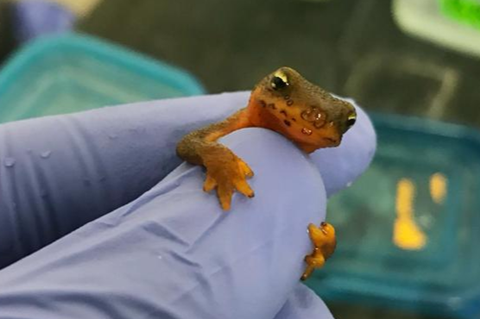A new article published in the journal Methods in Ecology and Evolution by Morris Animal Foundation-funded researchers describes a simplified method to detect a deadly fungus killing European salamanders. The ability to rapidly find the fungus is significant as the disease, although not detected in the U.S., could impact the millions of amphibians and salamanders annually imported.

The fungal pathogen Batrachochytrium salamandrivorans, or Bsal, threatens salamander diversity. Initially identified in northern Europe, evidence suggests it was introduced from Southeast Asia via the pet trade.
“The impacts of Bsal in Europe have been idiosyncratic but include some of the most severe population declines we have witnessed,” said Jesse Brunner, the study’s principal investigator and Associate Professor at Washington State University. “A large, diverse group of researchers, government biologists, and amphibian lovers in the pet trade are working hard to avoid such devastating impacts.”
Import ban
Despite a temporary U.S. ban on importing about 200 salamander species, Brunner noted the researchers’ focus is on preparing for potential arrivals and safeguarding amphibians.
To address that concern, the research team developed a noninvasive method to quickly detect Bsal in shipments and captive settings, surpassing the conventional individual animal infection determination — this new method tests environmental DNA for Bsal DNA to assess the pathogen’s prevalence.
“Our approach instead focused on detecting Bsal in a batch of animals in an aquarium or similar habitat if at least one of those animals were infected,” he said. “This is the scale at which we can help inspectors at borders or workers in pet trade facilities establish, with some confidence, that Bsal is absent. It provides a way to make this essentially invisible pathogen visible.”
Brunner attributed this work, involving thousands of polymerase chain reaction tests and years of researcher time, to Morris Animal Foundation’s $61,816 grant, which has catalyzed multiple projects.







No comments yet